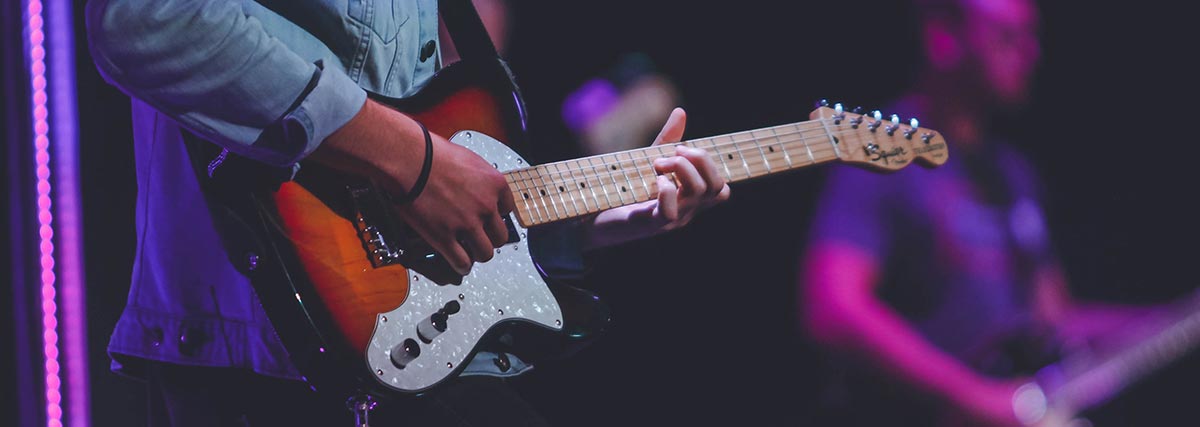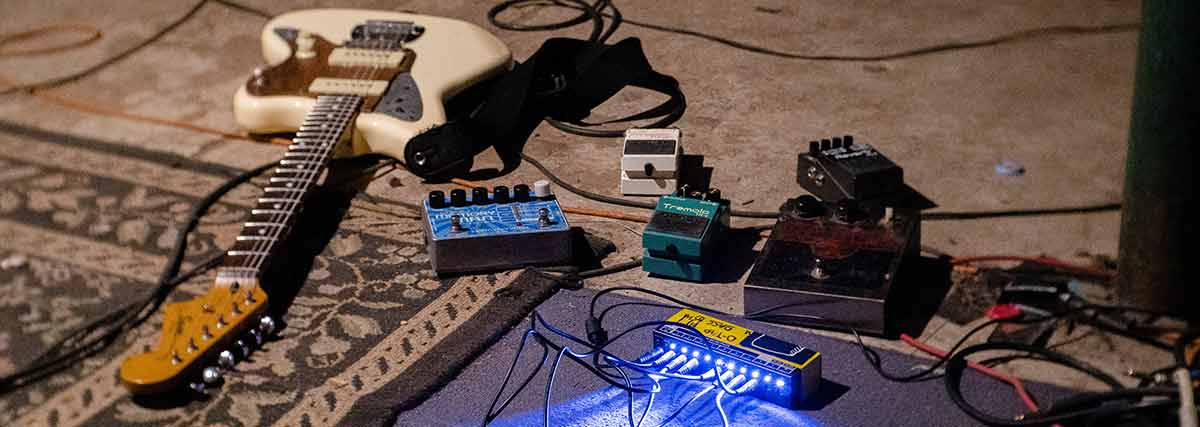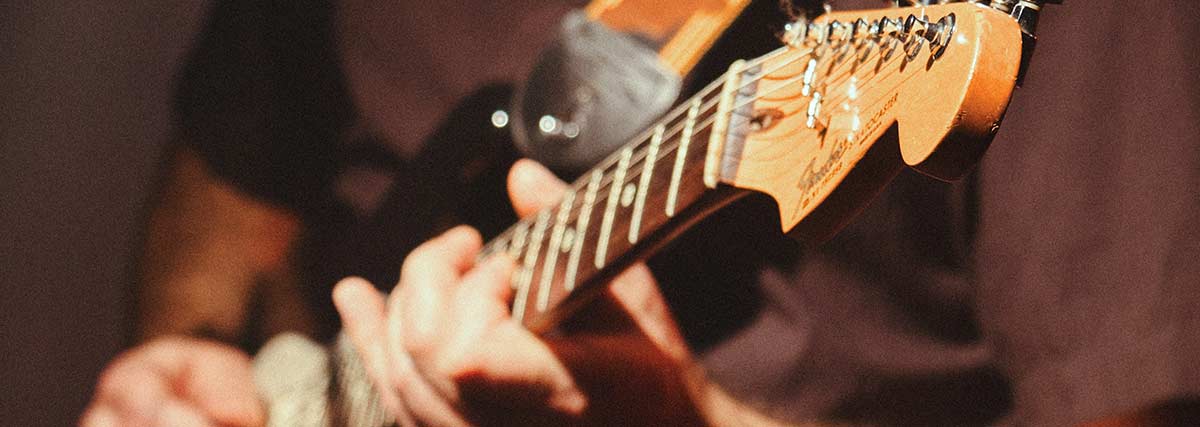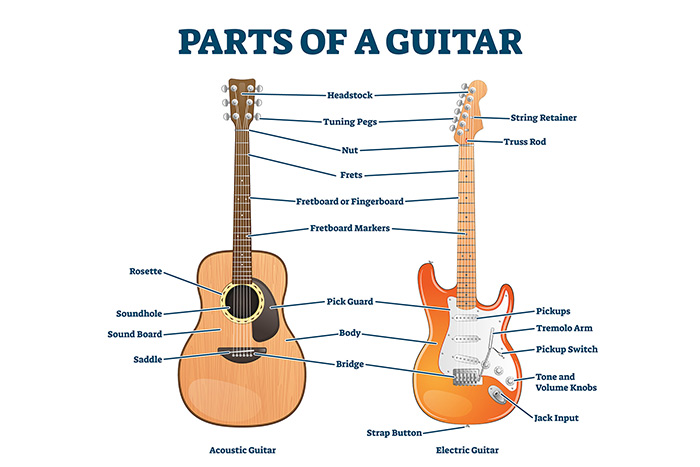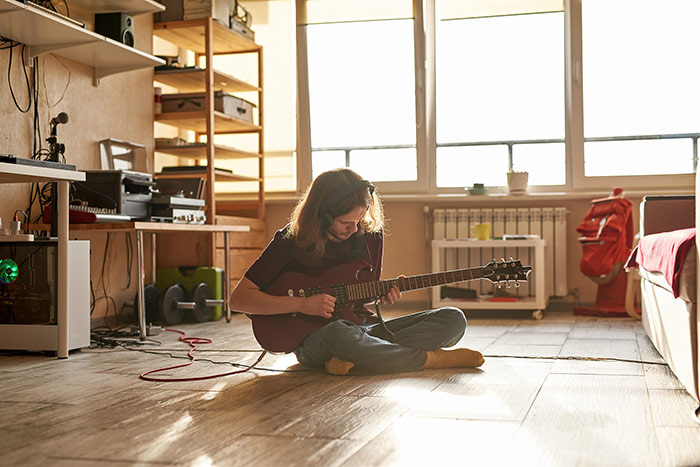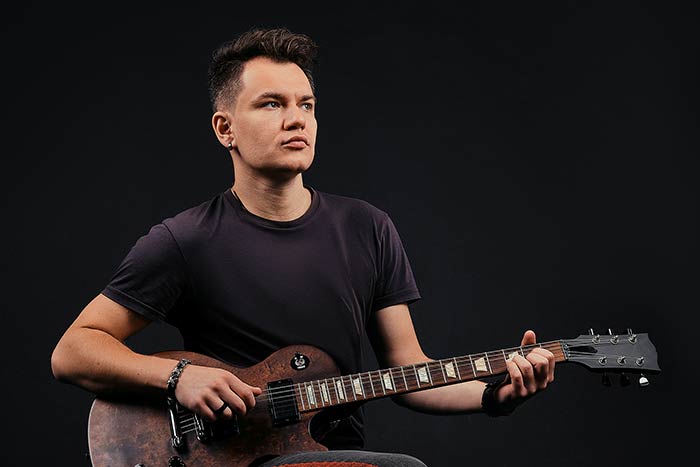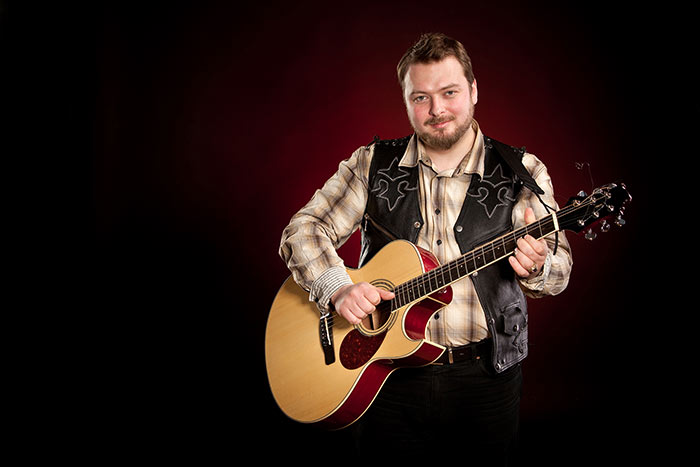Matching The Song You Want To Play
Have you ever sat down to practice one of your favourite songs on the electric guitar, but found that although you were playing the correct notes and chords in time, it just didn’t sound like the original? One reason for this could be that your tone isn’t matching to the song. So what is guitar tone anyway? Guitar tone is the sound or timbre of the guitar which could mean the effects that are being used, what pickup selection is being used, is it played with a plectrum or fingerpicked, and many other factors.
You could say that the sound difference between an acoustic guitar and electric guitar is due to the difference in tone. Or the difference between Kirk Hammett’s distorted guitars in Metallica and Mark Knopfler of Dire Straits’s clean to lightly overdriven sound is due to differences in tone.
If you think that tone could be the root of the problem why you don’t sound like your guitar heroes, have a look on your amp to see what effects are inbuilt into the unit. Many entry level solid state amplifiers will have different amp modules and effects built in, so you can instantly go from sparkly clean tones to heavy distortion tones.
Have a listen to the song that you were originally practicing to
determine if the tone is clean or distorted, then try to match on your amplifier. This can take a long time to tweak and is something that will come easier with experience, so treat your time playing around with tones as research into your instrument just like if you were practicing.
Feeling Inspired
Once you have your tone sorted play a few bars of your tune that you were practicing. Sound closer? If so you may find that you now feel much more inspired to play the tune and find that it matches up much closely to the track when playing along. Feeling inspired and motivated to practice is a very important thing to consider, since if you are thoroughly enjoying yourself when you play you will memorise and internalise more of the song and the techniques used.
If you are trying to learn “Master Of Puppets” by Metallica but had previously been playing this with a clean tone, you may have been frustrated that you didn’t sound like the recording which could have completely been due to the tone and not your playing at all!
To Sustain Or To Not Sustain
An important part of guitar tone that is particularly useful when soloing is the use of sustain. When you have a distorted or overdriven tone the notes will naturally sustain, meaning that they will ring for longer before decaying. This is used a lot in rock and heavy metal music as when you ring out a chord in a song or hold a note in a solo, you don’t want it to disappear instantly.
If you are soloing and want your notes to hold for longer, experiment with different amounts of gain on your sound to see where the sweet spot of having a tone that isn’t too dirty for the style that you are going for is, but will also allow the notes to ring for longer.
On the flip side of that coin is what if you don’t want the notes to decay? Some styles of music and guitar playing may actually benefit from having a guitar tone that doesn’t sustain, such as funk music.
Funk and other related styles such as RnB will often have short staccato parts played on the guitar, meaning the notes purposely don’t decay at all to create more space in between the notes to give a funky feel. For something like this you may want to have a completely clean tone with no distortion and no reverb to keep the notes as short as possible.
Reverb is another tool that can be used to create decay or sustain, which could be useful if it is not stylistically appropriate to use a lot of distortion. Reverb is an effect that will make your guitar sound like you are in a big room which will cause the sound to decay for longer.
Think about if you have ever been in a big church and clapped your hands together to hear the sound bounce off of the walls. This is used a lot on all instruments across many different styles, and can be very useful when wanting to create sustain. Many guitar amplifiers will also have this built in, and can also be achieved through a reverb stompbox-style pedal.
The delay effect can also be used in a similar way to create sustain, which is an effect that will repeat what you have just played after you have played it. The time between when you strike the note and when you hear the delay is controlled on the effect, as is how many times the sound will repeat and how loud you hear the delay. This is especially popular with guitarists when playing guitar solos as it can give an epic stadium-like sound. Think of David Gilmour’s famous solo in Pink Floyd’s song “Time” for an example of this effect.
Understanding Where Different Tones Are Appropriate
A big part of using different effects such as distortion and reverb is to also understand where it is stylistically appropriate to use them and also how much of them to use. For example, your over saturated and distorted lead tone that you use for your ripping guitar solos may not be the appropriate tone to use for your rhythm guitar part when you play chords, since the large amounts of effects could cause your tone to sound muddy and create a mess around the other instruments playing.
Many players will set up different presets on their equipment to have a different tone for their rhythm parts than their lead parts. They will also have an array of other cleaner and ambient tones ready for different songs or different sections of the songs. The same could be said for the opposite as well, if you tried to solo with your ambient clean tone you may find that the notes get lost in a cloud of reverb and delay which although was appropriate for the verse of the song, will require a change in tone for your solo.
Start messing around with tones at home to discover how much of a difference and how important guitar tone is to your sound!
Tags: Electric guitar, Electric Guitar Playing, Guitar advice, Guitar tips

